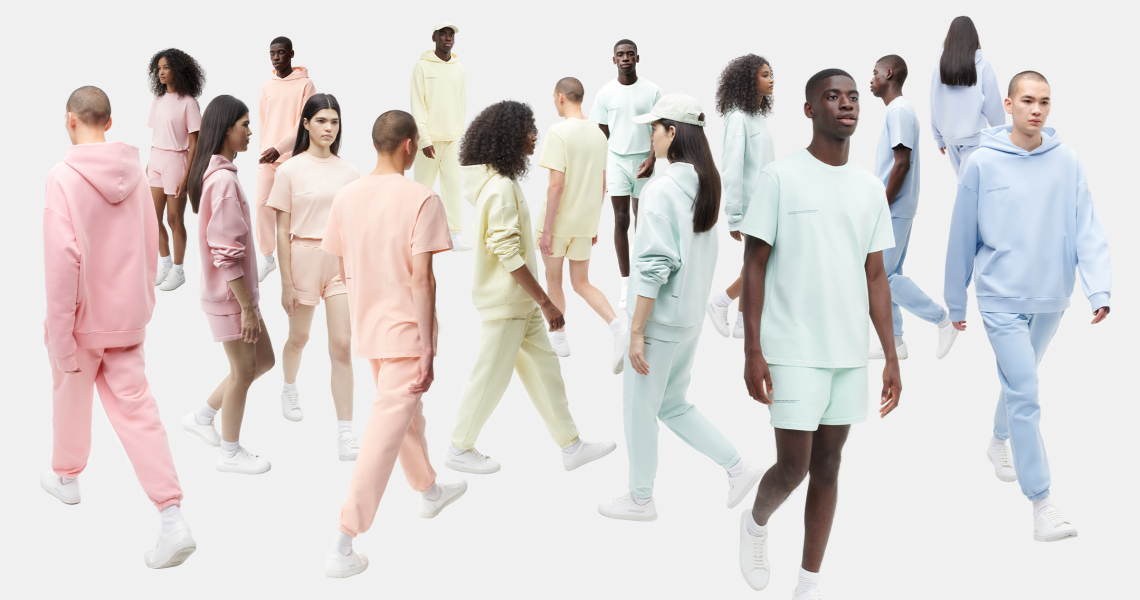In the early 2000s, Lululemon was one of the first companies to begin using a seaweed-derived fabric created by a company called SeaCell. Lululemon advertised the material online as containing anti-inflammatory and anti-bacterial properties that could reduce stress. But a 2007 New York Times investigation tested the SeaCell fabric and found no evidence that supported those medicinal claims. In fact, the Times’ test didn’t find any elements that indicated seaweed was in the fabric at all.
Lululemon continues to carry the fabric, which it uses for a line of clothing called VitaSea, but all medicinal claims are gone from its marketing and website. Instead, the brand focuses on the breathability and comfort of the material. But other companies like Leticia Credidio, Pangaia, Vuori and SeaCell continue to explicitly tout or imply the medicinal benefits of the fabric, despite a lack of supporting evidence.
On SeaCell’s website, a page on the benefits of its seaweed fabric reads, “Seaweed is added as the active substance for a very good reason. The fact that this marine plant is rich in trace elements has been well known since the times of Chinese medicine, and seaweed has also been proved to protect the skin and have anti-inflammatory properties.” SeaCell, which is based in Germany, did not respond to requests for comment.
One dermatologist, who asked not to be named, said that there’s no research backing up the claims SeaCell makes. While seaweed does contain many vitamins and nutrients, there’s no scientific backing to the idea that wearing clothes made with seaweed delivers those vitamins into the skin in any way.
Leticia Credidio, a British designer brand, uses SeaCell as a selling point. In the product information of one SeaCell nightgown, its site states, “The unique properties of seaweed help to protect our skin against the harmful environmental influences which we are exposed to in our daily lives.”
Credidio told Glossy over email that SeaCell provided several certificates from textile evaluators like Oeko-Tex certifying that the material is organic, as well as a breakdown of the specific vitamins and minerals in the fabric from Thorverk, a seaweed mill in Iceland. The breakdown shows minerals like chlorine, sodium and potassium and a large amount of vitamin C, consistent with what can be found in seaweed.
In a blog post from 2015, the activewear brand Vuori announced that it would begin using SeaCell fabric by saying it “is rich in minerals, proteins and trace elements which have a natural exchange with the skin when wearing it.” Vuori still sells clothing made from this fabric, and the claims about its medicinal benefits are still on the site. The brand did not provide comment on time for this story’s publication.
Ad position: web_incontent_pos1
Pangaia, a company that prides itself on its innovations in materials, also uses SeaCell fabric, but most of its marketing focuses on the sustainable credentials of using the material. Seaweed is 100% biodegradable. Pangaia harvests it once every four years, allowing it to fully and naturally regenerate between harvesting.
Pangaia’s web page about its seaweed fabric does include a line that reads “Saltwater seaweed is rich in essential substances like vitamins, antioxidants, amino acids and minerals.” But a representative from Pangaia said that isn’t meant to imply that those elements can be absorbed by the skin.
“Seaweed is a naturally regenerative resource that grows abundantly under the sea,” the representative told Glossy over email. “Generally, it has many great properties, but our fiber has not been explicitly developed to deliver any benefits to the skin.”
It has become increasingly common, over the last five years, for brands to highlight the health benefit of their clothes. Vibrant Body Co., for example, guarantees that its clothing is free from more than 100 common toxins found in other intimates products. Graffenberg, a Swiss brand, claims that anti-oxidants in its clothes can reduce the number of “free radicals” or trace elements that cause wrinkles, which has some scientific backing.
Standardizing and regulating the various claims made about sustainability and health benefits of clothing and production processes is a major issue in the fashion industry, so much so that the EU introduced laws against it this year. Fashion has largely been an unregulated space, in terms of what brands can say in their advertising, but that is slowly changing, according to Rania Sedhom, managing partner of Sedhom Law Group, who has experience with fashion law.
Ad position: web_incontent_pos2
“There are rules about nomenclature in all sorts of things,” Sedhom said. “Wines can only be called certain types if they’re from certain regions, for example. But fashion has never had anything like that.”




